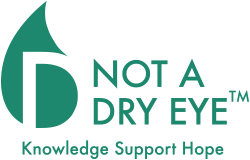Various questionnaires have been developed to facilitate the diagnosis of Dry Eye, and to identify the severity or stage of the disease. These are useful tools, and should help to quantify and objectify a condition for which treatment of symptoms, rather than clinical diagnosis, is paramount to the patient.
Questionnaires could be designed to better describe objectively the degree to which an individual is suffering from Dry Eye Syndrome and related co-morbidities, and the degree to which the disease has affected their Quality of Life. None of the surveys we have encountered, for example, asks a patient how many doctors they have seen for their condition. If the patient has seen only one other doctor, this may indicate that the patient is in the early stages of the disease and is still able to function normally. If a patient has seen more than five doctors, and in some cases “countless” doctors, the sheer number of doctors seen should be an indication of a more serious condition.
Many surveys do not ask if the patient is able to keep their eyes opened all day. The survey developed by Begley et al at the University of Indiana is at least one exception.
We have never seen a survey that asks if a patient has had thoughts of suicide or enucleation (removing the eyes), though there are surveys that do ask other Quality of Life questions, such as: are you able to drive, read, work, or perform daily functions normally?
If a patient is not able to keep their eyes opened all day (minus occasional time closed to rest the eyes), this is an indication of a severe and serious condition such as symptomatic conjunctivolchalasis. An answer of “yes” to either enucleation or suicide is another indication of a severe and extremely serious condition that requires immediate and serious intervention. Prescribing lubricating drops, lid wipes, warm compresses, RESTASIS®, or any other drop or ointment, alone or even together, will not resolve these serious conditions. Nor is telling someone that they will learn to live with their condition adequate. Unfortunately, this is what many of us have often heard. Furthermore, suggesting that the symptoms are psychosomatic, or “all in your head,” is a fundamentally inadequate diagnosis with a “blame the patient” connotation.
In short, surveys that indicate that Quality of Life has been seriously impacted, as when eyes are kept closed the entire day, or that reveal thoughts of suicide or enucleation, should be indications to both doctors and patients that the disease has progressed to a severe and serious stage. Physicians should take appropriate action and, if treatment is outside their expertise, should refer the patient to a Dry Eye specialist immediately, perhaps even contacting the specialist themselves to ensure that the patient will not have to wait too long to get an appointment.
If a physician is not comfortable adding these questions to a survey, so as not to alarm patients with less severe cases of Dry Eye Syndrome, then they could, at a minimum, gently ask the question verbally and document the response in their notes.
Following are the names of several Dry Eye questionnaires, and links if available. The number of questions and authors are included when available.
- CANDEES (The Canada Dry Eye Epidemiology Study), 13 questions, by Doughty et al
- DEQ (Dry Eye Questionnaire), 21 questions, by Begley et al
- IDEEL (Impact of Dry Eye on EverydayLlife), 3 modules, 6 scales, 57 questions, by Rajagopalan et al. This survey is copyrighted by Alcon Labs.
- Harvard Dry Eye Questionnaire
- International Sjogren’s Classification, 3 questions, by Vitali et al
- McMonnies, 12 questions, by McMonnies and Ho
- OSDI (Ocular Surfce Disease Index), 12 questions, by Schiffman et al
- SANDE (Symptom Assessment in Dry Eye)
- Schein, 6 questions, by Schein et al
- SPEED (Standard Patient Evaluation of Eye Dryness)
- WHS (Womens’ Health Study), 3 questions, by Schaumberg et al

